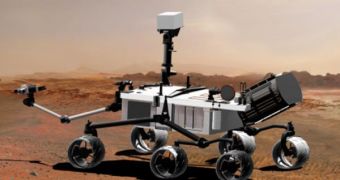NASA's Mars Science Laboratory (MSL) is currently under intense fire from critics, who say that the project has already exceeded more than 4 times the initial sum of money granted for the project, and that the new rover attempts to include way too many new technologies for the current stage of development. At the top of the list is Alan Stern, a former NASA associate administrator for science missions and also a planetary scientist, who states that the space agency should go about exploring Mars using the same old-fashioned types of rovers like Spirit and Opportunity. However, there are those who see sense in this and continue to push on with the completion of the project.
First of all, MSL is a huge leap forward from the tiny, solar-powered probes that now scout or have scouted the Martian surface in the past. No one is disputing the great results the current rovers, Spirit and Opportunity, have got, in fact, they are very much appreciated. But there comes a time when progress must be felt, especially in the delicate field of planetary exploration. That's why the new machine will not be tiny, and will not be powered by the Sun, but is bound to have in excess of 550 kilograms, and an uninterrupted power source in the form of a small nuclear charge.
Stern, who has gone after NASA in a newspaper column, is the best example of how a small part of NASA's management employees are – reluctant to try something new, and clinging on to the past, as shown in this video. He advocates that the MSL only be equipped with six instruments instead of ten, and that other innovation on the spacecraft is useless. Fortunately, the ideas at NASA differ from this money-oriented and puny perspective:
"We need a larger support structure. We need a more capable arm. We need to be able to look at not just the geology but much more the chemistry, much more the organic elements. We have to have a more capable rover," Jim Green, who is the director of NASA's planetary science division, argues. He shares that the new devices aboard the MSL are due to provide a more thorough insight into what the planet is made of, as the robot will have the ability to dig, remove, and store samples in specific chambers that are retrofitted with various tools designed to analyze the samples, and send back information on the spot.
In addition, the new rover is far more rugged and durable than Spirit and Opportunity, which currently stand about half of MSL's size. For this mission, a new landing system had to be devised, one that would ensure the delicate machinery was not damaged upon entering the Martian atmosphere. In truth, this is the cause that drives prices over budget – innovation and careful planning, as well as a desire to progress. For people such as Stern, this is just a useless spending of money. Unfortunately, not everybody sees the big picture in space exploration.

 14 DAY TRIAL //
14 DAY TRIAL //